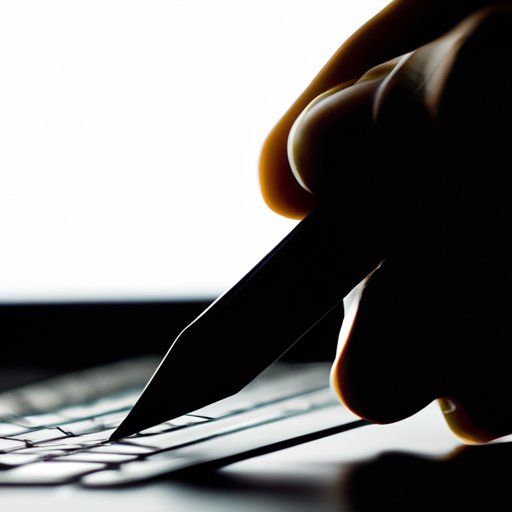Introduction
Blurring an image can convey a sense of movement, depth, or ambiguity, giving a photo a unique and creative look. Whether you want to add a subtle blur effect to a portrait or create a dreamy and surreal landscape, blurring an image can be an effective way to enhance your photographs. In this article, we will explore the different techniques and tools available for blurring images, including step-by-step tutorials, free online editing tools, and best practices for achieving the desired effect.
Step-by-Step Tutorial
Before we dive into the different tools and techniques available for blurring images, let’s start with a step-by-step tutorial that covers the basic steps involved in the process:
1. Open the image you want to edit in your preferred photo editing software (such as Adobe Photoshop or Lightroom).
2. Create a duplicate layer of the original image.
3. Apply the desired blur effect to the duplicate layer. This can be done using a filter or by manually blurring specific areas of the image using a blur tool.
4. Adjust the opacity of the duplicate layer to fine-tune the intensity of the blur effect.
5. Save the edited image.
It’s important to note that the steps involved in blurring an image can vary depending on the software you are using, as well as the specific effect you want to achieve. With that in mind, let’s explore some of the tools and techniques available for blurring images in more detail.
Free Image Editing Tools
If you don’t have access to professional photo editing software or simply prefer to use free online tools, there are several options available for blurring images. Two popular choices are Fotor and GIMP.
Fotor is a free online photo editor that offers basic editing tools such as cropping, resizing, and color adjustments, as well as a variety of filters and effects. To blur an image using Fotor, simply upload the image, select the “Crop” tool, and choose the “Blur” option. You can adjust the intensity of the blur using a slider, and select from several types of blur effects.
GIMP is a free and open-source image editing software that is similar in functionality to Adobe Photoshop. It offers advanced editing tools such as layers, masks, and brushes, as well as a range of filters and plugins. To blur an image using GIMP, open the image in the software and select the “Filters” menu. Choose “Blur” from the options, and select the desired type of blur effect. You can adjust the blur intensity using a slider or by manually blurring specific areas of the image using a brush tool.
Best Practices
When it comes to blurring images, there are several best practices to keep in mind to ensure that you achieve the desired effect. These include:
– Adjusting the blur intensity: Depending on the image and the effect you want to achieve, you may need to experiment with different levels of blur intensity. It’s a good idea to start with a lower intensity and gradually increase it until you achieve the desired effect.
– Using different types of blur effects: Different types of blur effects, such as Gaussian blur, motion blur, or radial blur, can create different visual effects. Depending on the image, you may want to use a combination of different blur effects for a more complex and interesting effect.
– Avoiding common mistakes: When blurring an image, it’s important to pay attention to details such as avoiding making the blur effect too strong, blurring important details that should be in focus, or creating an uneven or patchy blur effect.
Examples and Inspiration
To give you some inspiration and ideas for how to use blur effects creatively, let’s take a look at some examples of images that have been blurred in interesting and unique ways:
– A portrait with a subtle Gaussian blur effect applied to the background, creating a dreamy and surreal atmosphere.
– A landscape photo with a motion blur effect applied to the water, creating a sense of movement and energy.
– An abstract image with a radial blur effect applied to a central point, creating a vortex-like effect.
Creative Applications
Finally, let’s explore some creative applications for how to blur an image. Some ideas include:
– Creating a depth of field effect in landscape photos by blurring the background or foreground to draw attention to the main subject.
– Using blur to create a dreamy or surreal effect in portraits or other types of photos, such as still life or abstract images.
– Combining blur effects with other editing techniques, such as color adjustments or texture overlays, to create unique and engaging images.
Conclusion
Blurring an image can be a powerful and creative way to enhance your photographs, whether you’re looking to create a dreamy and surreal effect or add a sense of movement and energy to your photos. By following best practices and experimenting with different tools and techniques, you can achieve a range of interesting and original effects.
(Note: Is this article not meeting your expectations? Do you have knowledge or insights to share? Unlock new opportunities and expand your reach by joining our authors team. Click Registration to join us and share your expertise with our readers.)
